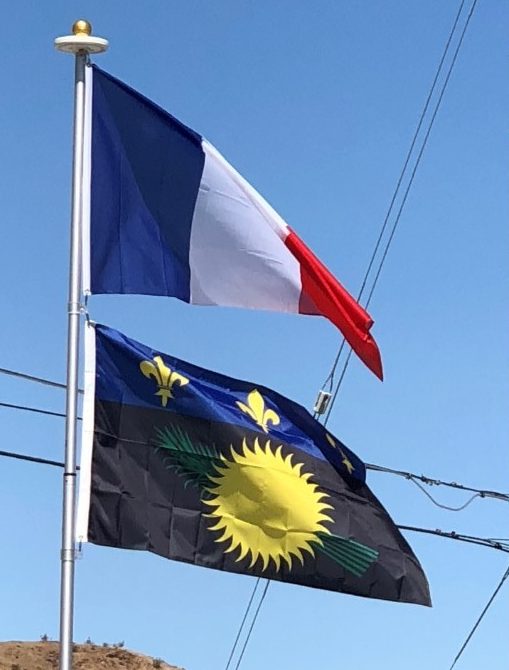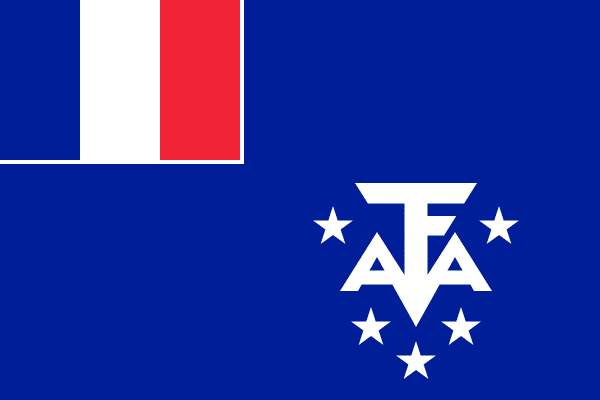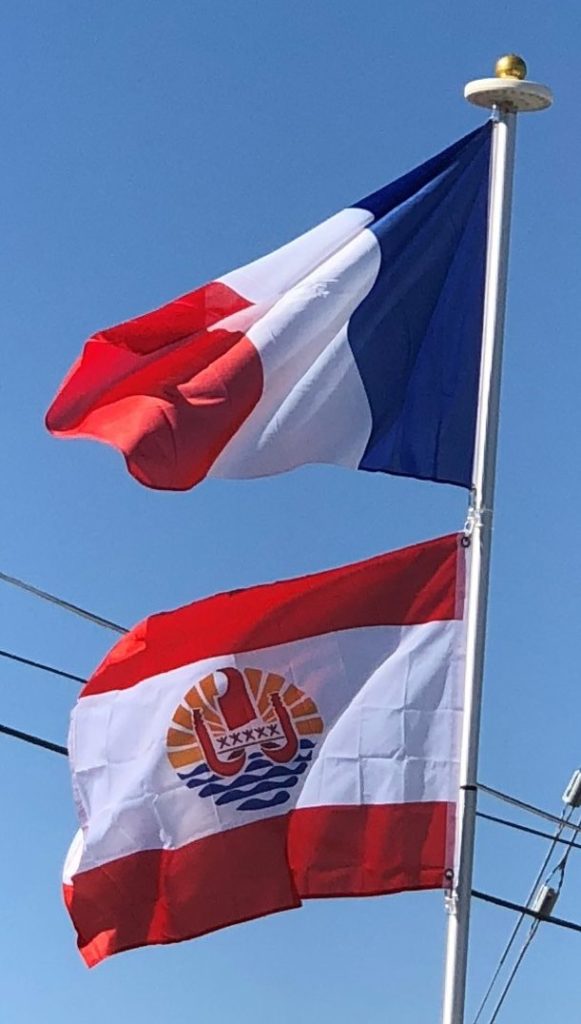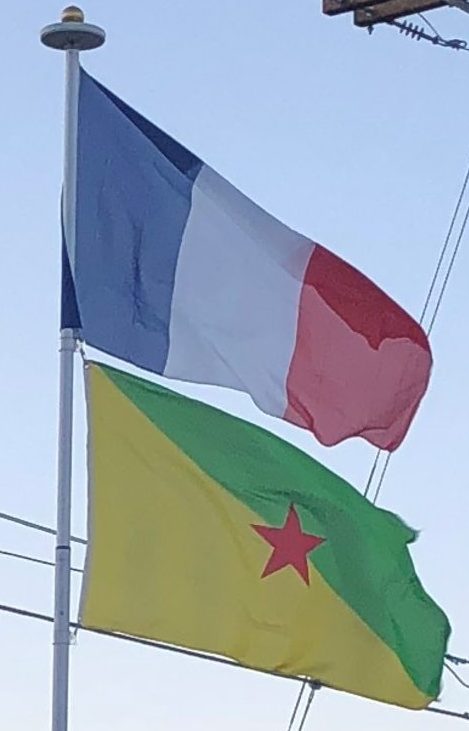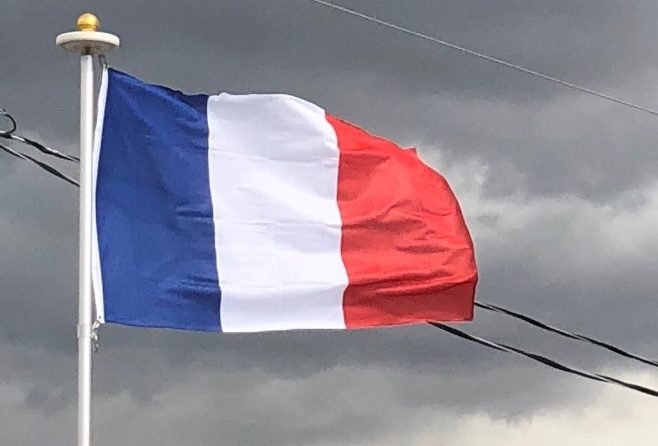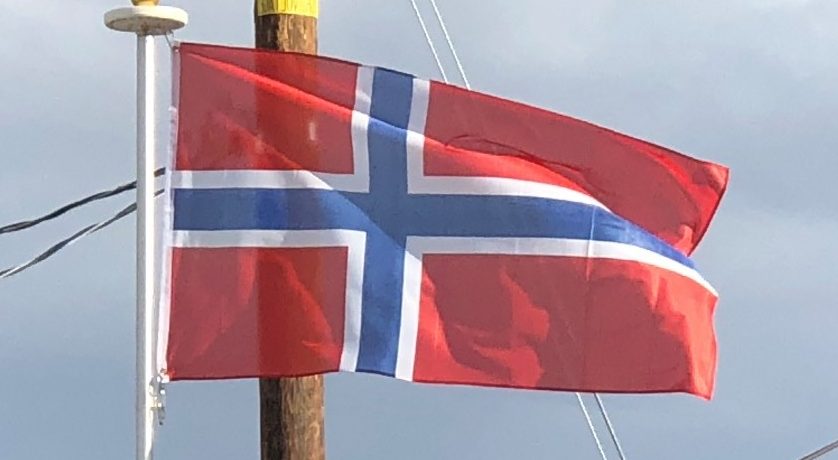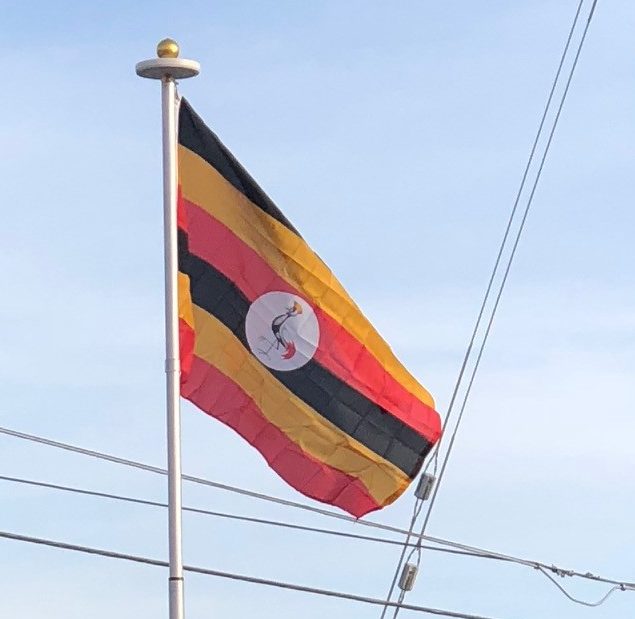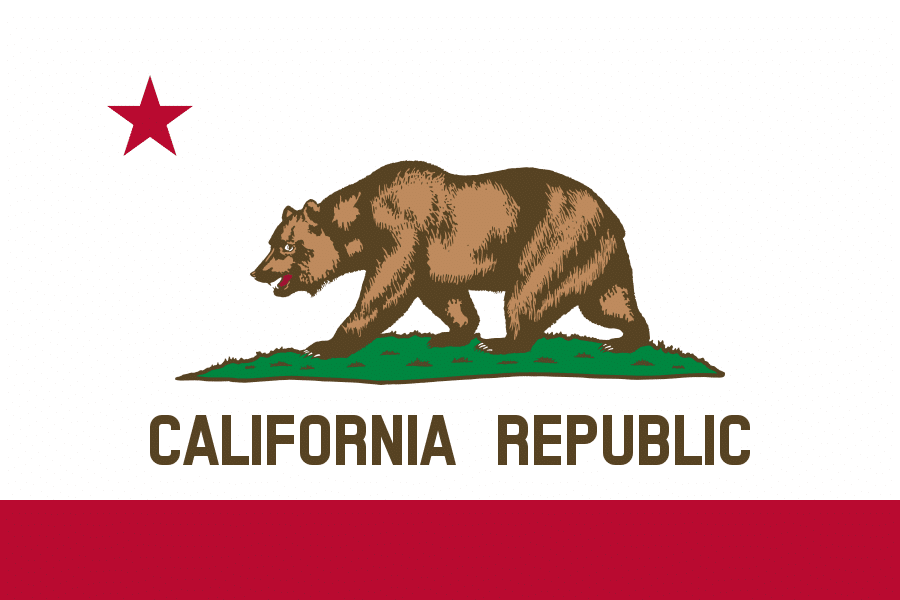Today’s Flag – Guadeloupe
Originally Guadeloupe was inhabited by the relatively peaceful Arawak peoples from about 300 CE and by the 8th century the more hostile and warlike Caribs had taken over. They remained isolated an in undisputed control until their discovery by Columbus, on his second voyage, in November 1493. He gave the island the name that it carries to this day. It is also said that Columbus first saw a pineapple on Guadeloupe even though they had been grown in South America for centuries, but of course, Columbus never found the South American mainland.
